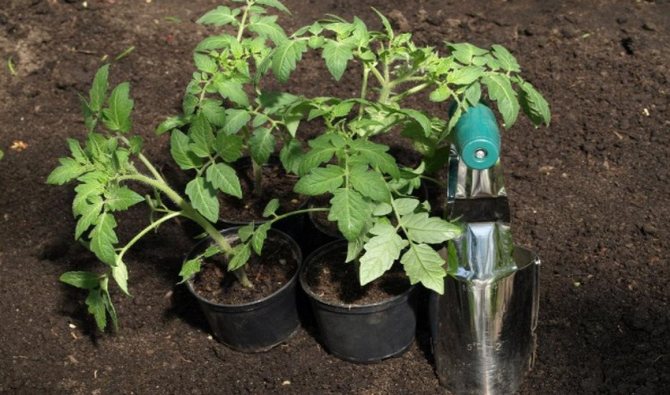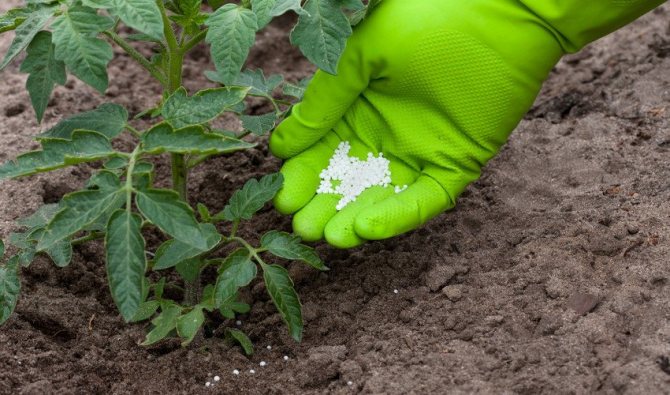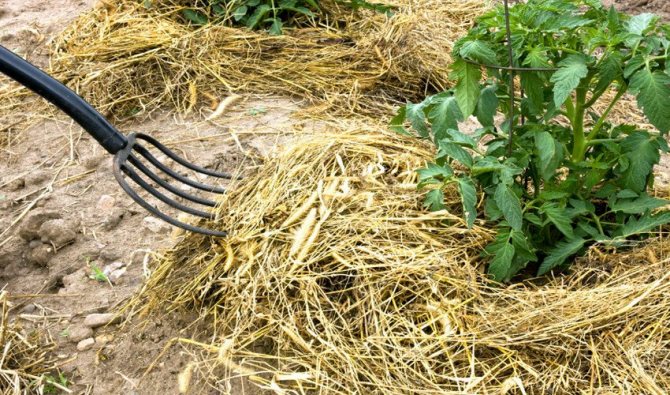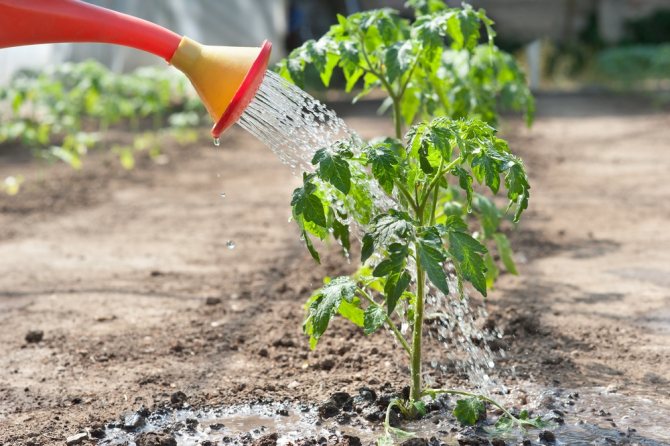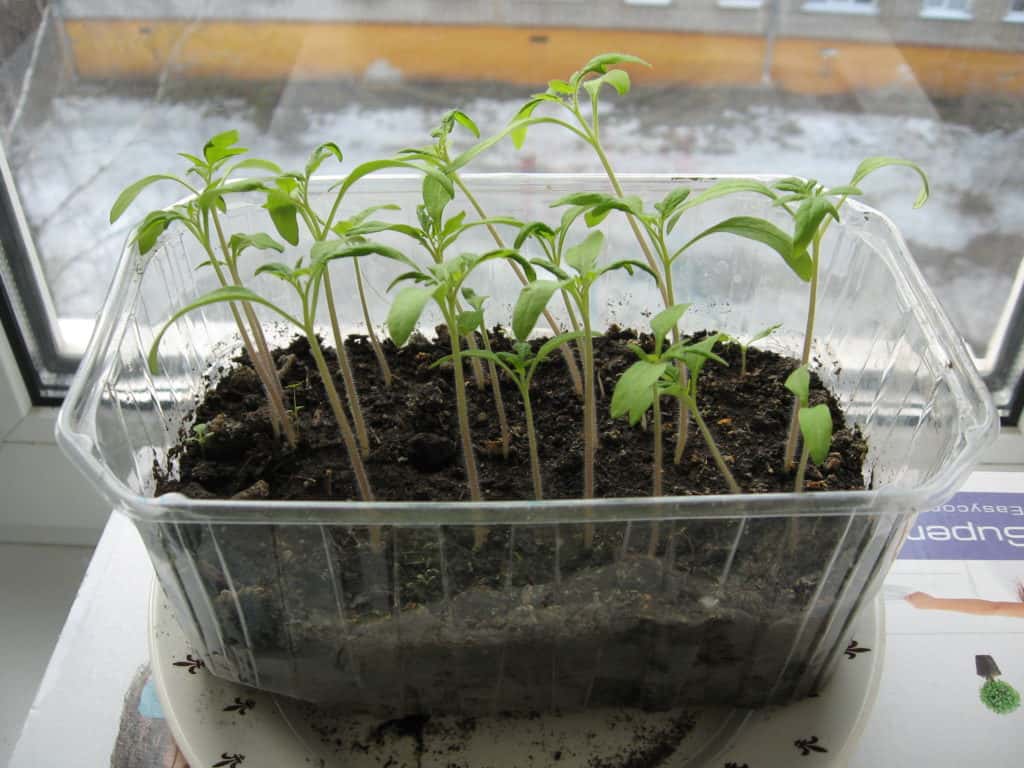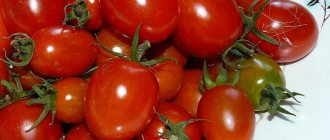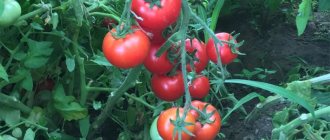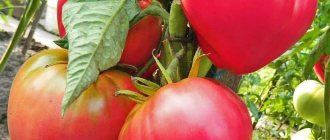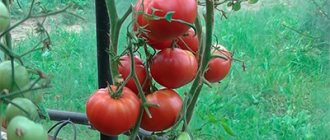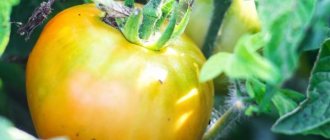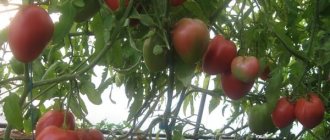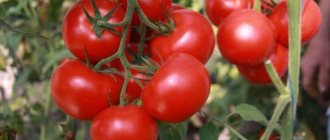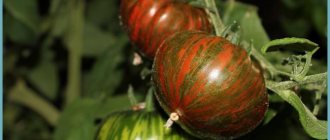Tomato Peach: variety description
| Variety name | Peach |
| general description | Mid-season indeterminate variety |
| Originator | Russia |
| Ripening period | 100-115 days |
| The form | Rounded |
| Color | Ripe fruits of yellow peach tomato are creamy yellow, red subspecies - red, pink - light cherry, white - transparent greenish |
| Average weight of tomatoes | 100g |
| Application | Universal |
| Variety yield | 6-8 kgs sq.m |
| Growing features | Standard agricultural technology |
| Disease resistance | Disease resistant |
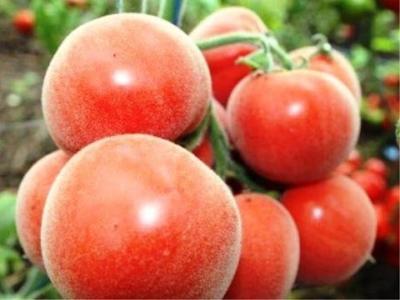
Tomatoes "Peaches" are indeterminate plants, not standard plants, about 150 - 180 cm high. Usually they form into one strong, powerful stem. The rhizome is well branched, develops horizontally. Leaves of the "potato" type, dark green, wrinkled and small in size. There are many brushes with 5-6 fruits on the stem. The stalk is strong - the fruits do not crumble. The inflorescence is simple, formed over 7-8 leaves, then every 2 leaves. Early in maturity, the crop can be harvested 90-95 days after planting.
So, let's understand the subspecies of this variety. Let's start with the Red Peach tomato - mid-season, harvest on day 115. Suitable for open and protected ground. The next tomato is "Pink Peach" F1, it is distinguished by a large number of fruits per cluster, up to 12 pieces. The variety is resistant to many diseases and pests. Hybrids of the same name with even better quality traits were also bred. Tomatoes "Peaches F1" have the same shape and skin as their counterparts, but differ in the large size of the fruit.
All subspecies are rounded, not ribbed, with a rough surface, without spots at the stalk. Usually about 100 g, medium in size. Fleshy, sweet (up to 10% sugar content), no sourness, aromatic. There is a minimum amount of dry matter in fruits. They have 2-3 chambers for seeds. Stored for a long time, well transported.
The color of unripe fruits of all subspecies is light green. The ripe fruits of the Yellow Peach tomato are creamy yellow, the red subspecies is red, the pink ones are light cherry, and the white ones are transparent greenish. In vegetable gardens, you rarely find a white subspecies of tomato.
You can compare the weight of fruits with other varieties in the table:
| Variety name | Fruit weight |
| Peach | 100g |
| Tsar Peter | 130 gram |
| Peter the First | 30-250 grams |
| Black Moor | 50 grams |
| Apples in the snow | 50-70 grams |
| Samara | 85-100 grams |
| Sensei | 400 gram |
| Cranberries in sugar | 15 grams |
| Raspberry Viscount | 400-450 grams |
| The Tsar Bell | up to 800 grams |
Fruit application
The fruits are sweet and do not have sourness, for this they are considered dessert and are often eaten fresh. They are used in baby and diet food. Due to their small size, tomatoes are well suited for winter preservation. They also make delicious tomato juices and pastes.
Round-shaped tomatoes are attractive even when unripe: they hang from the stems with tassels. But all the beauty of varieties and hybrids is manifested when the berries ripen. Peach red tomatoes are colored relatively evenly, but other varieties can be attributed to bicolors.
The peach is white and yellow in biological ripeness, they are light, greenish-white or yellowish in color with a delicate pink blush.Peach pink tomatoes resemble nectarine in color, combining shades of orange and pink.
The most remarkable thing about the Peach tomato variety is the skin. Unlike conventional tomato varieties, it is covered with a light fluff, which creates a velvety effect. The structure of the shell is dense; tomatoes do not crack, are easily transported without losing their consumer qualities and presentation. Ripe Peaches keep well at room temperature and refrigerated.
The pulp has a delicate texture, not too dense. The tomato contains 2-3 large seed chambers. Reviews of gardeners indicate that the taste qualities of the Peach tomato variety are high. The sugar content in the pulp exceeds 10%. Tomatoes are sweet, with mild sourness and pleasant aroma with fruity notes.
The color of the pulp in light varieties is almost white. These tomatoes are considered hypoallergenic and are included in the diet of children. Red and orange Peach has an evenly colored core of the corresponding shades. The cut of a Pink peach is very beautiful: the pulp is colored in red and yellow shades, reminiscent of mixed peaches and cream. Those who have already planted velvety tomatoes agree and say: "I will definitely plant a Peach in the new season!"
The purpose of these tomatoes is fresh consumption. Tomatoes are so exotic that you want to include them in salads and slices, eat them whole, and decorate your festive table with them. Processing for the winter is possible in the usual ways: tomatoes are suitable for whole-fruit canning, tomato juice and sauces. The velvety skin during heat treatment and pickling does not retain an unusual appearance, and the juice will turn out to be tasty, but quite ordinary.
Characteristics
The result of our compatriots - breeders. Registered in the State Register of the Russian Federation in 2002. Grown with great success in Ukraine, Russia and Moldova. It is considered a dessert variety of universal use. Good fresh when heat treated. Perfect for whole-fruit canning, the fruit does not crack. Taste is not lost when used in various salads. Suitable for the production of juice and tomato paste, sauces.
Of the shortcomings, pubescence of fruits is distinguished, some consider pubescence to be a highlight.
Advantages:
- high productivity;
- color, shape of the fruit;
- taste;
- unpretentiousness;
- cold resistance;
- good immunity to disease;
- not afraid of most pests.
On average, the yield is about 6-8 kg per sq. m. - about 2.5 kg per plant. In greenhouse conditions, the harvest is possible in large sizes. A feature is the roughness of the fruit, color. Fruit set occurs in any weather.
You can compare the weight of the variety with other varieties in the table:
| Variety name | Yield |
| Peach | 6-8 kg per square meter |
| Rocket | 6.5 kg per square meter |
| Summer resident | 4 kg per bush |
| Premier | 6-9 kg per square meter |
| Doll | 8-9 kg per square meter |
| Stolypin | 8-9 kg per square meter |
| Broody | 10-11 kg per square meter |
| Black bunch | 6 kg per bush |
| Fat jack | 5-6 kg per bush |
| Buyan | 9 kg per bush |
Testimonials
- Marina, 34 years old: “I have been growing tomatoes Peaches for 5 years. I really like them for their sweet taste. Of course, they are not suitable for preservation, since there is not enough juice in them, but for a salad this is what you need. No special care is required for them. I grow them the same way as my regular red tomatoes. But I do the treatment with fungicides without fail, since pests and diseases from other varieties can easily spread to peaches. "
- Anna, 43 years old: “I fell in love with this variety for its beautiful appearance and excellent taste. I grow them in a greenhouse and then sell them on the market. I can say that the demand for them is very high. The yield is quite high, since from one bush I can get up to 14 kg of fruits from 1 m2. It's pretty good. I water it once a week, one bush takes 1-2 buckets of water.I bring in mineral fertilizing, and also tie up the bushes, because because of the large amount of tomatoes, it can break. "
It is also worth reading reviews about how the fertilization of tomato seedlings with ash is applied.
Tomato Peaches is a fairly common tomato variety that has an attractive appearance, excellent taste and is not picky about care. And you can grow it both in a greenhouse and in the open field, if you provide protection from wind and cold.
Photo
Growing features
The seeds are initially prepared for planting. Usually soaked in a weak solution of potassium permanganate, to exclude the occurrence of diseases. Then some use special growth stimulants in which the seeds are soaked overnight. Further, the seeds are usually placed on wet material for pecking.
Seedlings are sown in March-April in a special soil for tomatoes and peppers. Sowing depth - 1 cm, the distance between plants is about 1 cm. Cover with foil for several days to create sufficient moisture. When germinating, open. Watering is infrequent, but abundant. Do not let water get on the leaves, this will destroy the plants.
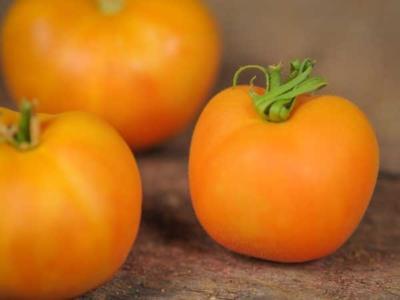

When 2 full sheets appear, they are seated in separate cups (picking). Pick containers with holes in the bottom. A pick is needed to strengthen the root system and the plant as a whole. When the plant has about 10 full-fledged leaves and its growth is 20-25 cm, it is possible to plant it in open ground or in a greenhouse. Usually on the 50th day after landing. Before planting in the ground, the seedlings are usually hardened, the vents are opened for several hours, or they are taken out into the fresh air.
The soil temperature during planting should be at least 20 degrees. Plants are planted around mid-May. The greenhouse can be planted earlier. For open ground, a special shelter from the cold should be provided. Fragile plants cannot withstand the weather.
Tomatoes are usually planted in a checkerboard pattern, at a distance of about 40 cm from each other. The aisle between the rows should be approximately 70 cm. When planting in a permanent place, holes filled with mineral fertilizer or mullein should be prepared. A few weeks before planting the plants, the soil is dug up with humus and disinfected with copper sulfate. Warm up using shelters. Good precursors for tomatoes are cucumbers, zucchini, carrots. You cannot plant on areas where potatoes grew last year.
Tomatoes are planted in cloudy weather, or in the evening, so that the sun does not shock the plants. After planting, the tomatoes are well watered at the root and left without action for a week and a half. After that, regular fertilizing with mineral fertilizers is relevant, every one and a half weeks. Mulching and loosening are good for plant growth. Watering is not frequent, abundant at the root. The variety does not require grazing. Only the formation of a bush into one stem.
A garter is only required in the case of multiple fruits. The garter is held to individual pegs or trellises with ribbons made of synthetic materials, other materials can cause stem rot. Flowering occurs in mid-June, after the fruit set, it is required to stop interfering with the soil, except for watering. Harvesting at the end of June. Will have time to ripen again in the presence of new seedlings.
Care rules
"Peaches" are not capricious, but it is still necessary to carry out basic procedures. During the entire growing season, you need:
- Water the plants at the root, abundantly, but not often. Tomato leaves should not get wet. Irrigation is carried out late in the evening or early in the morning when there is no bright sun.
- Ventilate the greenhouse or raise the edges of the cover film.
- Feed the vegetable until fruit forms, then stop fertilizing.
- Form the plants into 1 stem, after which do not cut off the stepsons.
- If there are few fruits, and they are on one side of the bush, you need to tie the tomato to a support or to a trellis. But this procedure is rarely required.
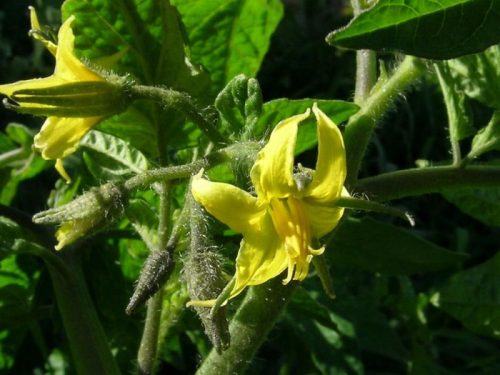

- Treat the bushes as a preventive measure, despite the resistance of the variety to diseases. This is done before the fruits ripen.
- Mulch the soil between the plants to keep the water in the soil longer.
The first fruits of "Peaches" of different colors are removed at the end of July. Tomatoes yield until mid-autumn if climatic conditions permit. In the south or in a greenhouse, 2 generations of varieties can grow.
Diseases and pests
Tomatoes "Peaches" are well resistant to most nightshade diseases. Not afraid of a bear, "tomato" aphids, spider mites. Preventive spraying with insecticides and fungicides against diseases and pests remains relevant. In this case, store-bought drugs or folk remedies are used.
conclusions
Tomato Peach is a great option for those who are just starting to take an interest in the garden and are trying to grow their own vegetables. This unusual tomato is also suitable for those gardeners who are looking for something original and unbeaten. Of course, the Peach tomato is not the variety with which the entire plot is planted, in order to enjoy unusual fruits, a dozen bushes are enough. Those who grow tomatoes for sale are definitely worth trying Peach as well - the unusual fruits will definitely interest buyers.


